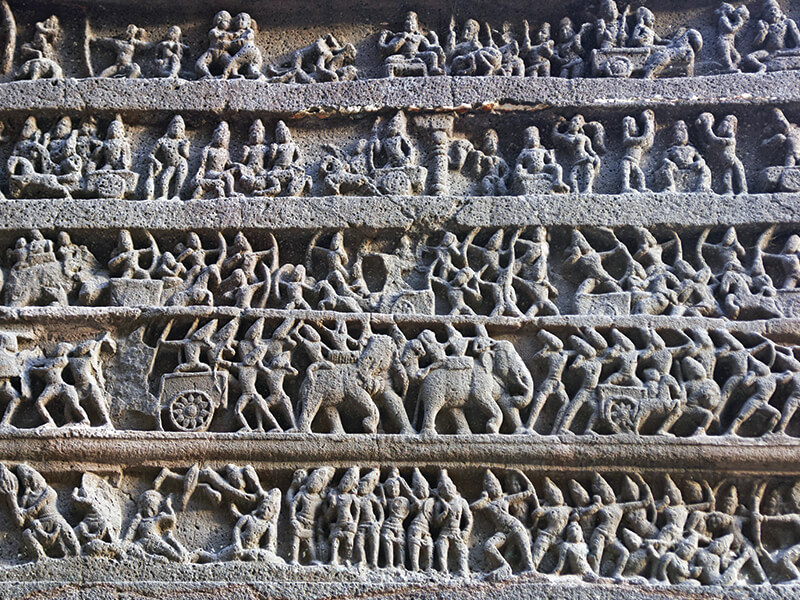Reap Only What You Sow

In Hinduism, there is no concept of original sin. Instead, there is the karma, the idea that actions have consequences. The idea that actions have consequences is not unfamiliar to anyone, but karma is more than the basic sense of cause and effect. Karma is the idea that actions have consequences that can affect a person throughout multiple lives. It is these consequences that determine how, when and where a person is reborn into their next life. A person, thus, gets exactly what they have earned. Someone who has lived a good life will be reborn into a good situation. They might be reborn as a member of a higher caste. They might have more money or a safer home. If they lived a good enough past life, they might have an easier life with fewer hardships when they are reborn. On the other hand, a person who lived a life of greed and cruelty will be reborn as someone who is ill, crippled or, perhaps, not even human at all. In Hinduism, there is no belief that humans are somehow cursed by the actions of an ancestor. Instead, each person makes their own karma and so determines their own future.
Emphasis on Beauty
Hinduism is a beautiful religion. Hindu festivals are filled with color and music. Holi, perhaps the best known Hindu festival, is also called the Festival of Colors. During this holiday, Hindu men and women throw color on one another in a joyous celebration. On a similar note, Durga Puja often involves ritual or folk dances with both men and women wearing colorful clothing. Hindu worship is also often aesthetically pleasing. Murtis, statues or images of the deities, are carefully and intricately designed. Offerings and worship often involve candles, spices or flowers. Hindu temples themselves tend to be monumental works of art. Temples can have hundreds of statues and carvings of deities other than the deity the temple is dedicated towards. Shaiva temples, for example, often have images of the god Ganesh or the goddess Shakti in addition to those of Shiva.
Hindu children also grow up reading picture books about the various gods and goddesses. These books are filled with detailed, colorful illustrations and are often treasured even through adulthood.
No Single Path to Take
Hinduism is a religion defined by flexibility. There are dozens of gods and goddesses each of which has their own personality, iconography and focus. Hindus looking to grow their business or increase the wealth of their family may favor Lakshmi, goddess of good fortune. Hindus looking to achieve moksha and escape the cycle of life, death and rebirth may turn to Shiva, the ascetic yogi god.
The expectations Hindus are meant to live up to are also flexible. Hinduism recognizes that a person has different concerns at different times in their lives. A young boy prioritizes very different things than a grown man who is trying to provide for his family. Hinduism recognizes this and takes it into account rather than being a one-size-fits-all religion. Children are expected to study and learn about the religion they follow, and adults are meant to focus on providing for their family. Elderly people with grown children can then focus on achieving moksha since their ascetic life will not mean abandoning people who need them.
Old as They Come

People do not tend to join religions for bragging rights, but Hindus do get to say that they have the oldest religion on the planet. Hinduism can be traced back to nearly 5,000 years ago to the Indus River Valley. It is from this that the word “Hindu” actually comes.
The Vedas can be traced to 1,900 B.C., but Hinduism may be even older. Archaeological excavations of the Indus River Valley region have uncovered dozens of artifacts covered in an ancient script. This ancient writing appears to be from the same long-lost language on each artifact. Furthermore, these artifacts often have images that are visually similar to the iconography of Hindu deities. This does not necessarily mean that these are ancient Hindu artifacts, but it is not a stretch to make the connection between these archaeological finds of what appear to be images of Hindu gods and modern Hinduism when both are from the same region. Unfortunately, there is currently no way to translate the writing on these artifacts, so their original purpose remains unknown.




Comments
Post a Comment